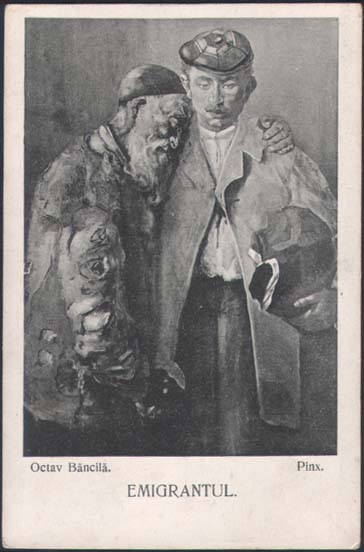
In Romania, as in Russia, it was the religious inclination, harsh living conditions, discriminatory legislation and ongoing deprivation that led the Jews to the desire to emigrate, and to the first ideas of national revival in the Land of Israel.
At the end of the 19th century a massive emigration of Romanian Jews to the United States, Western Europe, and Palestine began. Between 1889 and 1914 about 90,000 Jews left Romania, out of a population of 200,000. About 60,000 of them emigrated to the United States, 30,000 to England, and a small minority, approximately 3,000 people, moved to Palestine.
The first evidence of the desire of the Romanian Jews to immigrate to Eretz Israel and to engage in agricultural work began in 1867. In the same year, Dr. Wertheim, a Jewish doctor from Giurgiu, wrote a letter to the president of Alliance Israelite Universelle asking for details regarding Rabbi Yosef Natonek's settlement plan, and asking assistance for Romanian Jews to emigrate to Palestine.
Five years later, in 1872, the American consul in Bucharest, Franklin Peixotto, suggested the plan to allow 20,000 Jews to emigrate as a solution to their difficult living situation. Jerusalem rabbi, Rabbi Haim Zvi Sneersohn, raised the concept of establishing a Jewish state in the Land of Israel in the book "Palestine and Roumania" published in 1872 in New York,
Around the same time, in the spring of 1873, a group of one hundred families was organized in Nicoreşti in the district of Galați, to emigrate to Palestine, but this plan was never actualized. However, seven years later, in February 1880, during a visit to Romania, Eliezer Rokach, a young Jerusalem-born intellectual, decided to realize his dream of rebuilding the Land of Israel through agricultural work.
To this end, he proposed the founding of associations to settle the Land of Israel (Yishuv Eretz Israel ‘al Yede ‘Avodat Adamah), and by the summer of 1880 had founded the first one in Bucharest. Within a year, associations had been established in 30 communities.
The members of the "Association for the Settlement of the Land of Israel" in Moineşti played a central role in formulating the ideological framework of the movement, and declared that Aliyah to Eretz Israel symbolized the beginning of Jewish redemption.
They used arguments that would later appear in Leon Pinsker's book "Auto-Emancipation", published in 1882. In his book, Pinsker argued that the Jew's problem stemmed from the fact that they had no territory of their own, and that the correct way to solve the problem and revive the Jewish people was to return to the Land of Israel, productive work, and agriculture.
While many of the leaders of the Jewish communities were debating what steps to take, the leaders of the "Yishuv Eretz Israel" associations decided to coordinate their efforts, and proposed to convene a national conference in Focşani in the fall of 1881. The Focşani Conference, which was the first Zionist conference even before the term "Zionism" was minted, had as its goal the return to the Land of Israel and redeeming the land by means of agricultural work. In August 1882, the Moineşti Association was the first group of immigrants (made up of 30 families, 228 Romanian Jews from Moineşti, Focşani and other localities in Moldova) to achieve their dreams and left the port of Galați for Palestine. They founded the first agricultural colonies of Eretz Israel: Rosh Pina and Zichron Yaakov.